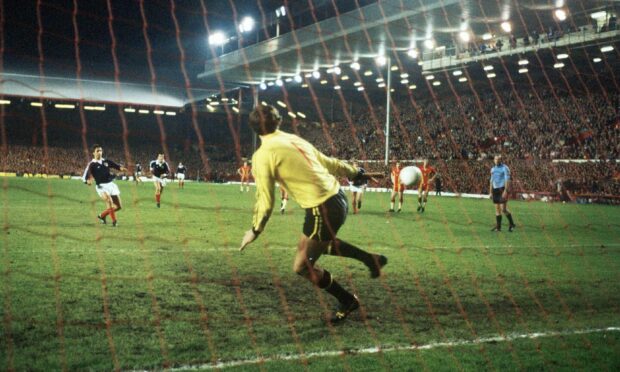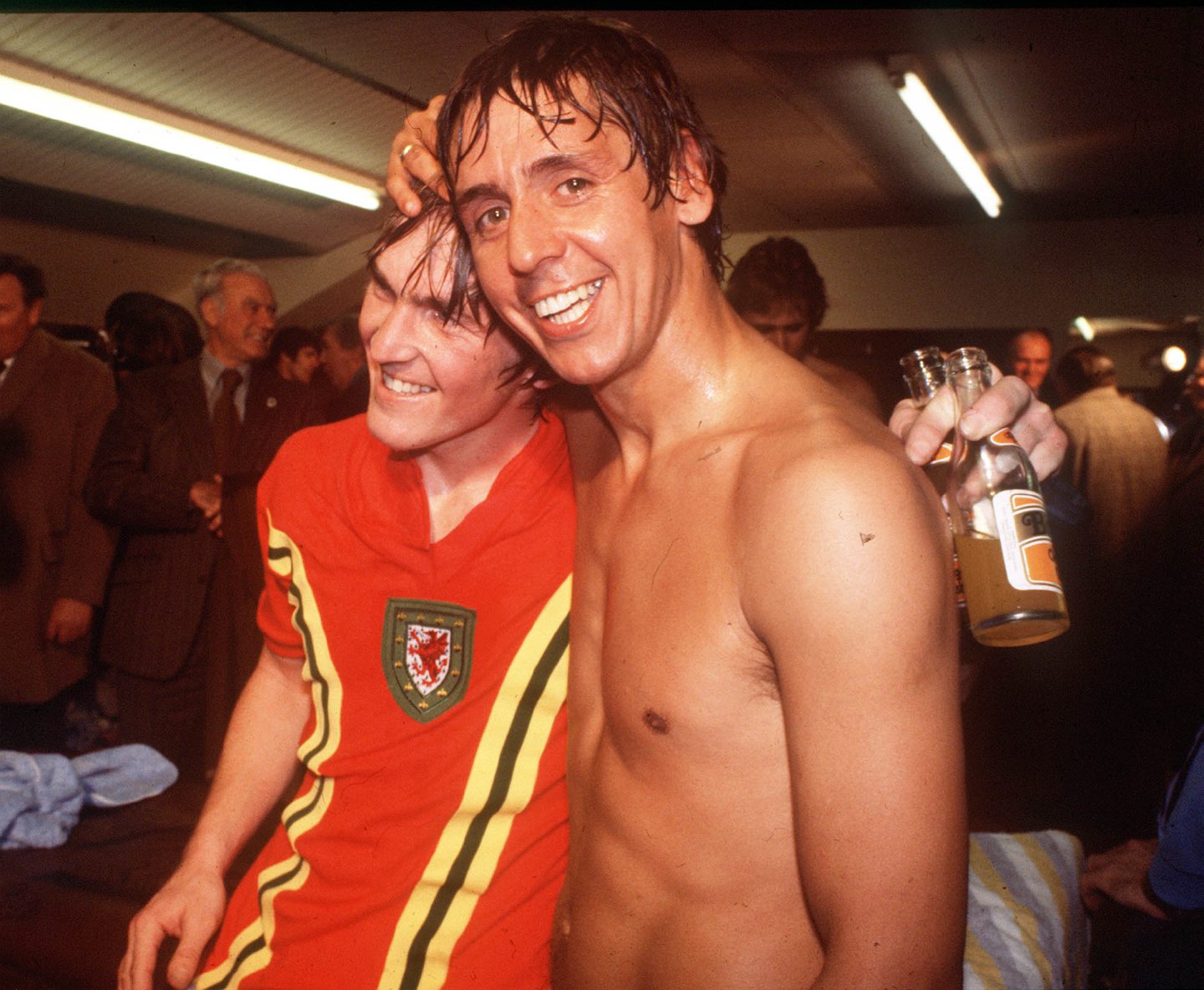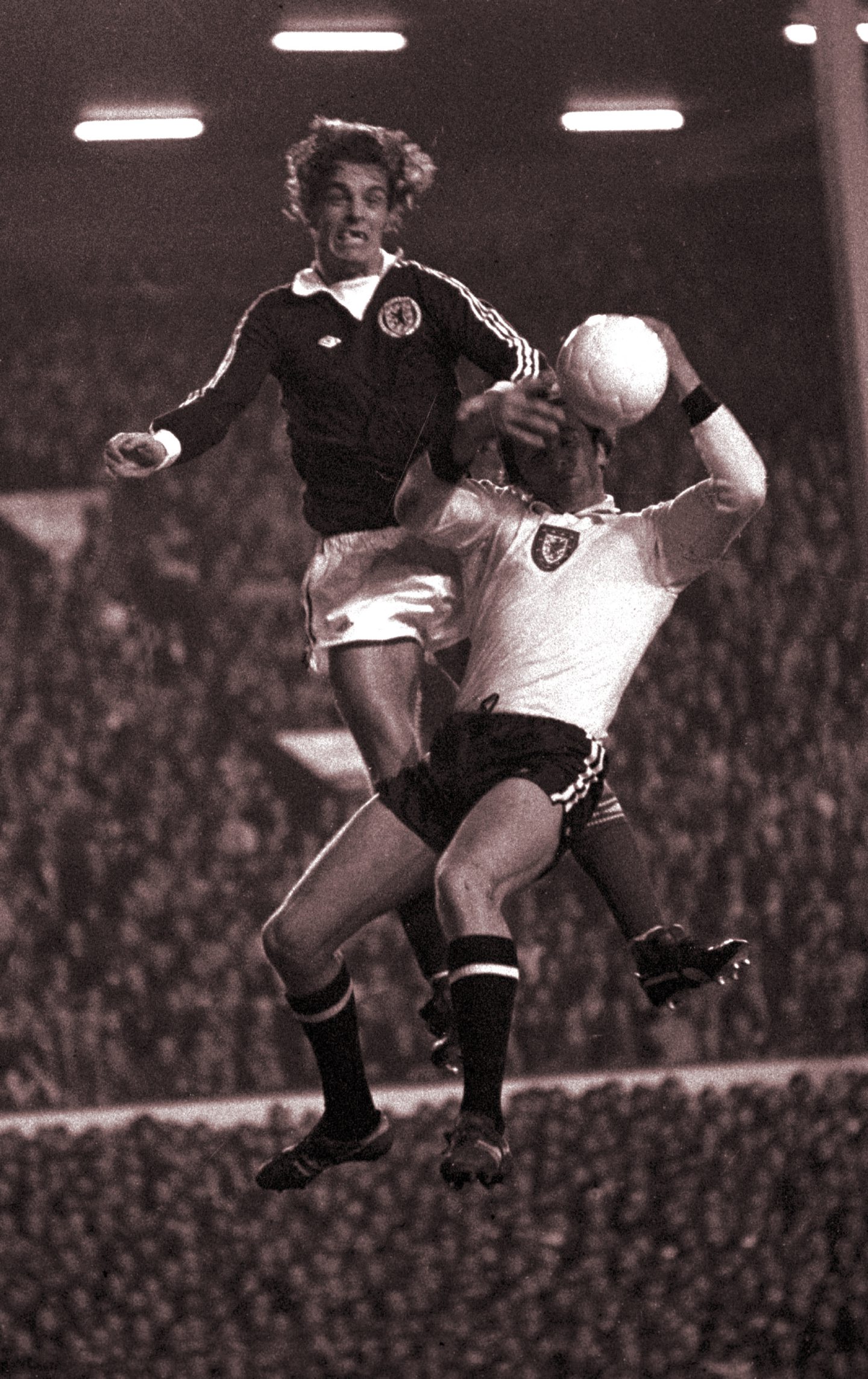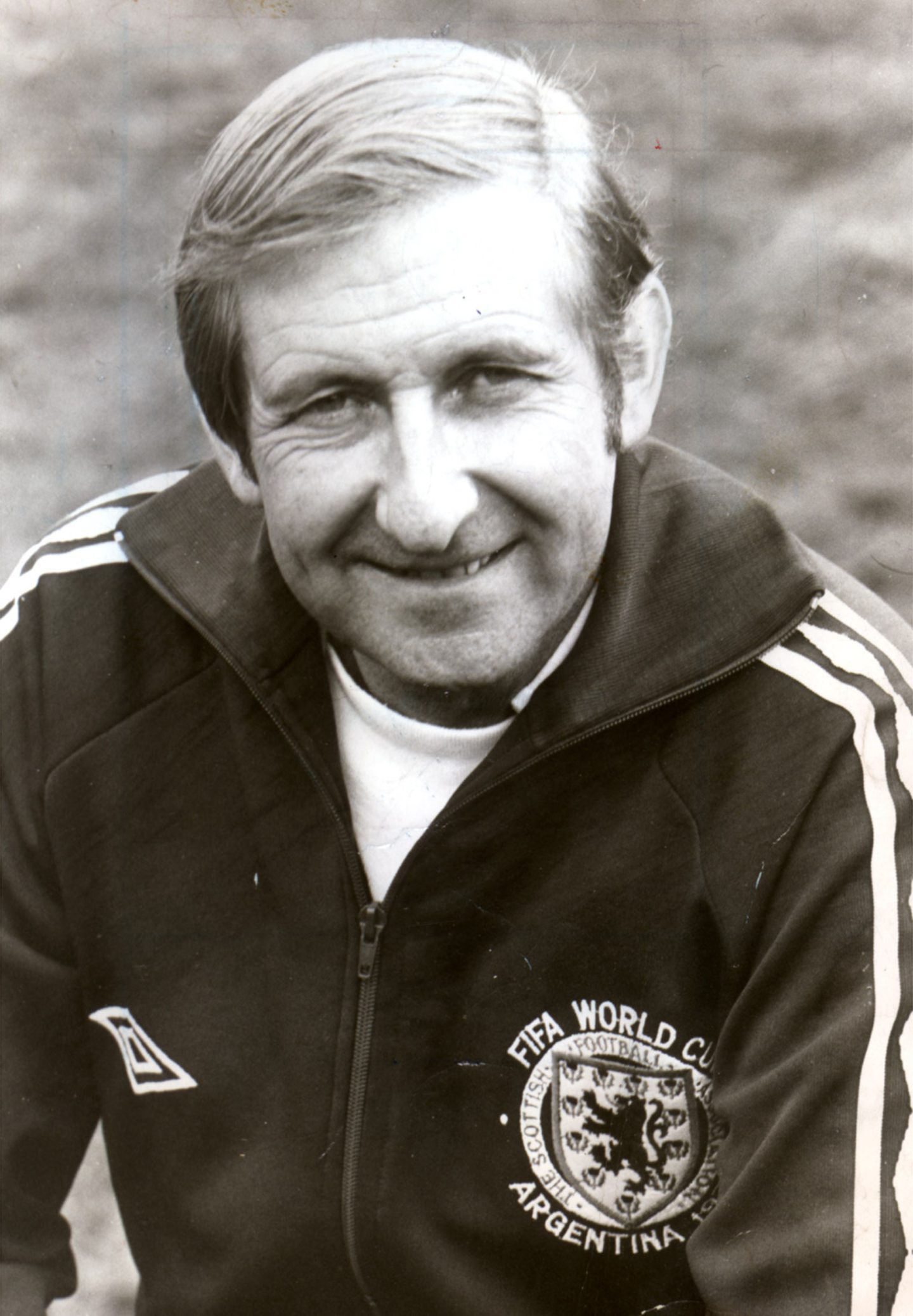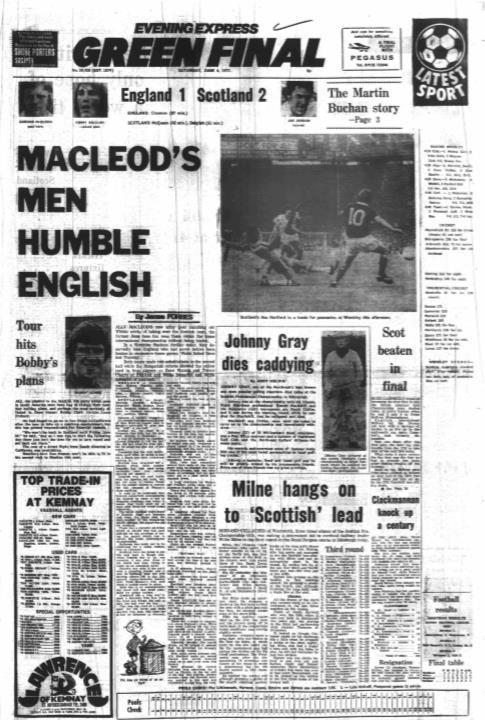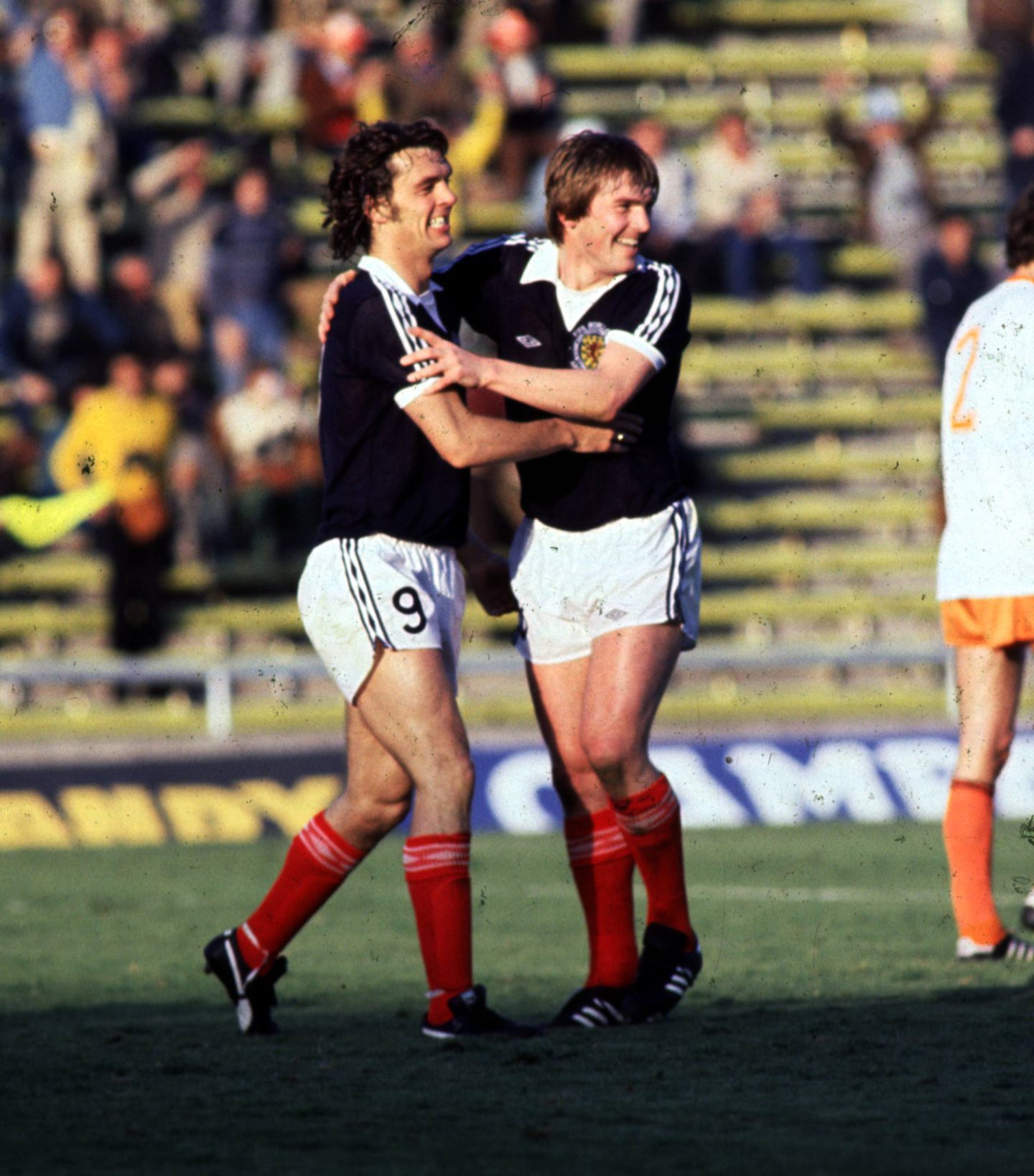It is one of the longest-running whinges in sporting history: the penalty decision awarded to Scotland when the ball struck Joe Jordan’s arm during a World Cup qualifying match against Wales in 1977.
Even now, 45 years later, the grumblings are continuing in a new documentary that has been produced by S4C where many of the participants in that Anfield clash look back in anger – or ecstasy, if you happen to be Scottish – at the pivotal moment late in the contest that provoked bedlam inside the ground.
The programme makes it obvious that the memory of Jordan, fist clenched, flicking on Asa Hartford’s long throw with his arm 12 minutes from time in the must-win clash, only for referee Robert Wurtz to award the Scots a spot kick, has become one of those seismic “Hand of God” moments that has fans throughout the valleys waking up in a cold sweat.
And what makes it worse for them is that Jordan has absolutely no contrition about what happened all those years ago.
As he tells the producers: “I’ve said my piece and that is it.
“It ain’t going to change. You move on.”
Then he looks them defiantly in the eye with that penetrating gaze which used to scare the wits out of opponents.
“No regrets from me, mate.”
The contest itself was one of the classic “Battles of Britain” of the period, although the atmosphere within the ground was more like the Colosseum as gladiators prepared to hack each other to bits.
From a distance, there’s something evocative about the tens of thousands of Scottish supporters packed into the stadium – to the extent that even Jordan wonders: “How did they all get tickets for an away match?”
But then, you have to remember the fixture had been been switched away from Ninian Park because of the crowd trouble that blighted the sport in the 1970s and ’80s.
And, as the film acknowledges, the Welsh FA chose to take the game to Liverpool FC’s ground and its greater money-making capacity than the intimidating Wrexham venue where the players felt at ease.
They were later left to rue that decision as their personnel walked out into what looked like the middle of a Rod Stewart concert or an explosion in a tartan factory.
They were everywhere and it’s estimated that as many as 35,000 of the 50,000 crowd had travelled down from Scotland to Merseyside.
No wonder Ally MacLeod’s players were delighted.
Jordan said: “We knew we were playing a very good Welsh team, but seeing the number of fans we had and hearing them singing their hearts out gave us the edge.”
Kenny Dalglish added: “It was perfect for me. I had just gone in there and signed for Liverpool in August. So it was like a home fixture for me.”
And Alan Rough recalled: “We had never seen anything like it away from home.
“When I came on to the pitch, I thought I was at Hampden for a minute.”
Yet, despite that sense of home disadvantage, Wales were no pushovers and they came close to breaking the deadlock when the dangerous John Toshack forced Alan Rough into a spectacular save.
His instinctive shot as the ball was headed into the box by clubmate Joey Jones induced near apoplexy in BBC commentator, Archie Macpherson, but despite looking in trouble, Rough managed to dive up superbly and tip it on to the bar in what he later admitted was one of his best-ever saves.
If Wales had taken the lead at that stage, it would have been a gruelling battle back from the abyss of World Cup elimination – even if cynics might now wonder whether it wouldn’t have been better if Ally’s Tartan Army hadn’t embarked on their ill-fated foray to Argentina eight months later.
But then, as the climax beckoned, came the intervention of the referee, the infamous Mr Wurzt – or as the Welsh pronounced it “worst” – after his contentious ruling sparked consternation and fury on and off the field.
Toshack was among those who were horrified and said: “The ref had a shocker.
“It was Jordan who handled the ball. We all knew it. Everybody knew it.”
Terry Yorath went further and called the Scotland striker a “toothless cheat”, which was a bit excessive.
What on earth was he supposed to do? Admit: “It was me, guv” and ask the official to change his mind? Aye right.
There have been a few tears in the dressing room. I can’t say any more. I’m sick myself.”
Wales player Terry Yorath
Don Masson, the Banchory stalwart, was tasked with completing the job and it couldn’t have been easy for him to retain his composure amid the Spector-like Wall of Sound which reverberated after the penalty verdict.
But if he hesitated for a split second as he approached the spot, he coolly delivered a sweet strike to leave Dai Davies wringing his hands in despair and the complaints have never ceased since in the valleys.
Some Wales fans appear to have forgotten that former Aberdeen captain Martin Buchan subsequently made a superb break and delivered a fine cross for Dalglish to bullet home a wonderful header in the 87th minute.
It was a piece of magic but its memory has been erased from this new programme.
Yorath said: “We’re sick, obviously. There have been a few tears in the dressing room. I can’t say any more. I’m sick myself.”
In the end, oblivious to the protests, Jordan and Masson embraced in the changing room and they and the likes of Dalglish, Rough and MacLeod, who had rushed on to the Anfield turf like a man demented at the end, were setting their sights on securing “a medal” at the 1978 World Cup.
What was that about pride coming before a fall?
And what about the last word from the fall guy, Jordan, whose name has gone down in infamy in large parts of Wales – not that it bothers him.
He said: “I do remember that great save from Alan Rough from John Toshack, but I think that, if you analyse the game, overall we were better.
“Even as a diehard Welsh supporter, you have to admit Scotland were the better team and deserved it.”
And he’s right. Get over it. Jog on!
2️⃣ Gêm
2️⃣ gyfle i gyrraedd Cwpan y Byd
2️⃣ gic o'r smotyn…yn erbyn yr Alban"I still feel angry everytime I see that video…"
🏴 Joe, Jock a'r Jincs Albanaidd
📆 Nos Lun | Monday
🕘 9.00pm#Qatar2022 | @elisjames pic.twitter.com/IAFTjqFfI9— S4C Chwaraeon 🏴 (@S4Cchwaraeon) March 17, 2022
